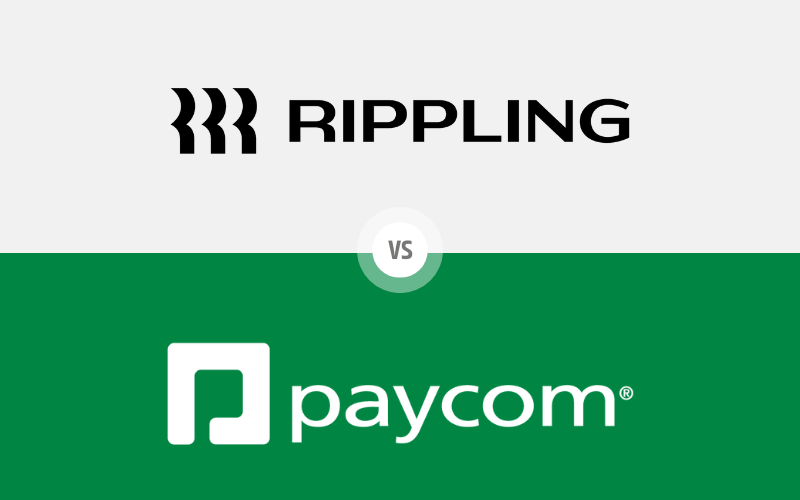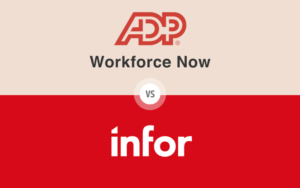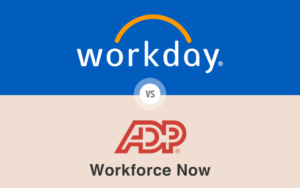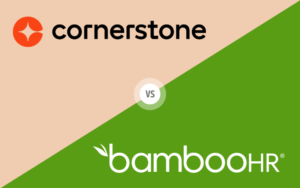Choosing between Rippling vs Paycom for your Human Capital Management (HCM) needs is a significant decision that can influence your organization’s operational effectiveness and employee satisfaction. In this blog post, we’ll delve into a detailed comparison of two leading HCM platforms, Rippling and Paycom, to help you understand their strengths and weaknesses across various HR functions. From user interface and experience to pricing and customer support, we’ll provide the insights you need to make an informed decision tailored to your organization’s specific requirements.
Table of Contents
User Interface and User Experience
When comparing Rippling vs Paycom, understanding their user interface (UI) and user experience (UX) is crucial for organizations looking to optimize their Human Capital Management (HCM) systems. Both platforms aim to enhance overall user engagement through their interfaces, but they do so with different approaches and priorities.

Rippling User Interface and User Experience
Rippling stands out with its modern, intuitive design that prioritizes user-friendliness and aesthetic appeal. The platform’s UI is sleek and streamlined, making navigation straightforward for users, particularly those who are tech-savvy. Rippling’s dashboard is designed to provide a comprehensive overview of tasks and notifications, offering a balance between feature richness and simplicity.
Key Features of Rippling UI/UX:
- Clean Layout: The interface uses space efficiently, enhancing usability while providing access to a wide range of features.
- Customizable Dashboards: Users can personalize their dashboard to display the most relevant information, tailoring the system to specific business needs.
- Extensive Functionality: While user-friendly, the breadth of features can be overwhelming for less experienced users, potentially requiring some time to fully master.
- Integration Capabilities: Rippling excels in its ability to integrate with numerous third-party applications, offering flexibility in system configuration.
Paycom User Interface and User Experience
Paycom provides a robust user interface that, while more traditional in appearance, is highly functional and designed to manage complex HR tasks efficiently. The platform’s UI is organized logically, making it easy to access a wide range of functionalities from payroll processing to talent management. Paycom’s interface focuses on straightforward navigation and an intuitive design, catering to users who prefer a clean, direct approach.
Key Features of Paycom UI/UX:
- Comprehensive Functionality: The interface is designed to handle detailed HR management activities, accommodating the needs of larger organizations with complex requirements.
- Efficient Navigation: Even with its extensive features, the layout is structured to facilitate quick access to various tools and data.
- Mobile App: Paycom offers a mobile application that users find convenient for on-the-go access to key features.
- Dedicated Training Support: Paycom ensures users can maximize the software’s capabilities with thorough training materials and responsive customer support.
Comparison and Conclusion
In the Rippling vs Paycom debate regarding UI and UX, the choice largely depends on what the organization values more: modern design and integration capabilities with Rippling, or comprehensive functionality with a more uniform interface from Paycom.
Rippling is ideal for businesses looking for a highly customizable platform with extensive integration options. Its modern interface is particularly appealing to tech-savvy users and organizations that prioritize system flexibility. However, the extensive functionality may require a learning period for some users to fully leverage the system’s capabilities.
On the other hand, Paycom is well-suited for organizations that require an extensive set of features within a more traditional interface. Its straightforward design may be more accessible to users of all experience levels, and the platform is recognized for its reliability in executing core HR functions like payroll and time-tracking.
Both Rippling and Paycom provide effective solutions, but your selection should align with your company’s specific needs, considering factors such as the nature of your workforce, the importance of system integration, and the balance between feature depth and ease of use. Ultimately, the best choice will depend on which platform’s strengths best align with your organization’s priorities and operational requirements.
Core HR Functions
Evaluating the core HR functions is essential when comparing Rippling vs Paycom, as these features form the backbone of any Human Capital Management (HCM) system. Both platforms offer robust capabilities, but their approaches to managing core HR tasks such as employee data, benefits administration, and compliance management have distinct characteristics.

Rippling Core HR Functions
Rippling excels in providing a seamless and integrated experience for core HR functions, making it an attractive option for businesses that value efficiency and user-centric design. The platform automates many HR tasks, reducing the administrative burden and allowing HR teams to focus on more strategic initiatives.
Key Features of Rippling Core HR Functions:
- Employee Data Management: Rippling allows for centralized management of employee records, ensuring that all data from personal information to job history is easily accessible and up-to-date.
- Automated Onboarding: The system streamlines the onboarding process, automatically triggering tasks such as equipment ordering and system setups when a new hire is added.
- Compliance Tracking: Rippling helps businesses stay compliant with local and federal regulations by automatically updating policies and providing necessary reporting tools.
- Benefits Administration: Offers comprehensive benefits administration capabilities, allowing for efficient management of various benefit plans.
- Advanced Reporting: Provides the ability to pull data from HR, IT, Finance, and third-party systems into a single report, offering more comprehensive insights.
- Extensive Integrations: Features over 600 out-of-the-box third-party integrations, significantly enhancing its functionality and adaptability to various business ecosystems.
Paycom Core HR Functions
Paycom offers a comprehensive suite of HR functionalities that cater to a wide array of HR processes. Known for its depth, the platform can handle complex HR tasks, making it well-suited for larger organizations or those with more intricate operational needs.
Key Features of Paycom Core HR Functions:
- Extensive Employee Database: Paycom provides a robust system for managing detailed employee profiles, including comprehensive tracking of career progression and performance evaluations.
- Dynamic Benefits Administration: The platform supports detailed management of benefits packages, offering customization options and support for various types of insurance and retirement plans.
- Advanced Compliance Capabilities: Paycom includes powerful tools to ensure compliance with all relevant laws and regulations, featuring built-in audits and real-time updates to legal requirements.
- Onboarding Tools: Offers features to facilitate the onboarding process, though the level of automation may differ from Rippling’s approach.
- Reporting Functionality: Provides reporting capabilities, although these may be more module-specific compared to Rippling’s cross-system reporting.
Comparison and Conclusion
In the comparison of Rippling vs Paycom concerning core HR functions, the decision hinges on the specific needs of your organization. Rippling stands out with its intuitive, streamlined system that reduces manual work and enhances overall efficiency. Its automated processes, advanced reporting capabilities, and extensive third-party integrations make it an excellent choice for small to medium-sized businesses or those that are scaling rapidly and value system flexibility.
On the other hand, Paycom may be more suitable for larger organizations that require a more detailed and granular approach to HR management. Its ability to handle complex HR functions with precision and extensive customization options within its own ecosystem makes it a strong candidate for enterprises with specific, in-depth HR requirements.
Both platforms offer robust core HR functionalities, including employee data management, benefits administration, compliance tracking, and onboarding tools. However, Rippling’s edge in system integration and cross-functional reporting contrasts with Paycom’s strength in handling complex, detailed HR processes within its comprehensive suite.
Your choice should align with your organization’s size, complexity, and specific HR requirements. Consider factors such as the importance of third-party integrations, the depth of HR processes needed, and the value of cross-functional reporting in your decision-making process. By weighing these factors, you can select an HCM system that not only meets your current needs but also supports your organization’s future growth and development.
Payroll Management
Payroll management is a critical component of Human Capital Management (HCM) systems, and when comparing Rippling vs Paycom, it’s important to understand how each platform handles this essential function. Both Rippling and Paycom offer robust payroll solutions, but they cater to different organizational needs with unique features and capabilities.

Rippling Payroll Management
Rippling provides a highly integrated payroll management system that emphasizes simplicity and automation. The platform is designed to make payroll processing as efficient and error-free as possible, benefiting companies that seek to streamline their payroll operations.
Key Features of Rippling Payroll Management:
- Automated Payroll: Rippling automates payroll calculations, tax filings, and deductions, significantly reducing the manual effort required each pay period.
- Integrated Benefits and Taxes: Rippling seamlessly integrates payroll with benefits administration and tax compliance, providing a comprehensive overview of payroll liabilities and employee benefits in one place.
- International Payroll: Offers capabilities for managing international payroll, which can be a significant advantage for businesses with global operations.
- User-Friendly Interface: Known for its intuitive design, making it easier for users to navigate and manage payroll tasks efficiently.
Paycom Payroll Management
Paycom offers a comprehensive payroll management solution known for its accuracy and flexibility. It is particularly well-suited for organizations with complex payroll needs, including those with diverse and geographically dispersed workforces.
Key Features of Paycom Payroll Management:
- Detailed Payroll Features: Paycom’s platform includes detailed features such as garnishment management, detailed payroll reporting, and employee self-service portals for payroll inquiries.
- Customizable Payroll Options: The system allows for extensive customization to meet specific payroll requirements, adapting to various pay structures and schedules.
- Compliance Assurance: Paycom provides robust tools to ensure compliance with all federal, state, and local payroll regulations, helping businesses avoid costly penalties.
- Comprehensive Reporting: Offers detailed payroll reporting capabilities to meet various business needs.
Comparison and Conclusion
Choosing between Rippling and Paycom for payroll management should depend on your company’s specific payroll demands. Rippling is ideal for businesses that value straightforward, automated payroll processes that integrate tightly with other HR functions. Its user-friendly interface, international payroll capabilities, and high user satisfaction rate (97%) make it suitable for startups, mid-sized companies, and businesses with global operations that prioritize efficiency and simplicity.
Conversely, Paycom may be the better choice for larger organizations or those with more specialized payroll needs. Its ability to handle complex payroll requirements and provide detailed customization options makes it a robust solution for enterprises that need a high degree of control over their payroll processes. Paycom also boasts a solid user satisfaction rate of 85%.
Both platforms offer efficient automation of payroll calculations, tax filings, and deductions, as well as strong integration with benefits administration and tax compliance. However, Rippling’s edge in international payroll and slightly higher user satisfaction contrasts with Paycom’s strength in handling complex, detailed payroll processes within its comprehensive suite.
In summary, both Rippling and Paycom offer effective payroll management solutions, but the best fit for your organization will depend on the complexity of your payroll needs, the level of integration you require with other HR systems, and whether you need international payroll capabilities. By assessing these factors, you can ensure that you select a payroll management system that not only meets your current needs but also scales with your business.
Time and Attendance Tracking
Time and attendance tracking is a crucial aspect of workforce management that directly impacts payroll accuracy and employee productivity. When comparing Rippling vs Paycom in this area, it’s essential to consider how each platform facilitates the recording, management, and reporting of employee hours.

Rippling Time and Attendance Tracking
Rippling offers a streamlined solution for time and attendance tracking that is well integrated with its payroll and HR systems. This integration helps ensure that time tracking is both accurate and efficient, reducing the chances of errors that could affect payroll.
Key Features of Rippling Time and Attendance Tracking:
- Seamless Integration: Rippling’s time tracking is fully integrated with its payroll and HR functions, allowing for smooth data flow across the platform.
- User-Friendly Interface: Known for its intuitive design, Rippling makes it easy for employees and managers to interact with time tracking features.
- Third-Party Integrations: Offers extensive integration capabilities with other business applications, enhancing overall functionality.
Paycom Time and Attendance Tracking
Paycom provides a robust time and attendance tracking system that is highly customizable and designed to accommodate the needs of both small and large organizations. The system is particularly noted for its ability to handle complex requirements across various industries.
Key Features of Paycom Time and Attendance Tracking:
- Comprehensive Functionality: Paycom offers a wide range of time tracking features as part of its extensive HR management suite.
- Customization Options: The platform allows for extensive customization to meet specific business needs and industry requirements.
- Compliance Features: Paycom provides tools to help businesses adhere to labor laws and regulations, reducing the risk of non-compliance penalties.
Comparison and Conclusion
In choosing between Rippling and Paycom for time and attendance tracking, businesses must consider their specific operational needs and the level of complexity in their workforce management. Rippling stands out for its user-friendly interface and seamless integration across its platform and with third-party applications. Its streamlined approach makes it particularly suitable for businesses looking to simplify their time tracking processes and ensure smooth data flow between HR functions.
On the other hand, Paycom may be more appropriate for organizations with complex time tracking needs or those that operate in highly regulated industries. Its robust functionality and extensive customization options make it a powerful tool for managing diverse workforce requirements.
Both platforms offer strong compliance features, helping businesses stay in line with relevant laws and regulations. However, Rippling’s edge in user experience and integration capabilities contrasts with Paycom’s strength in handling complex, detailed time tracking processes within its comprehensive HR suite.
Ultimately, your choice between Rippling vs Paycom for time and attendance tracking should align with your organization’s size, the complexity of your time tracking needs, and the degree of integration you require with other HR functions. Rippling might be the better choice for companies prioritizing ease of use and seamless integration, while Paycom could be preferable for those needing extensive customization and comprehensive HR functionality.
By carefully evaluating these factors, you can select a system that enhances your operational efficiency and supports your workforce management strategies. Remember to consider the overall user satisfaction rates, with Rippling scoring slightly higher (97%) compared to Paycom (85%), which could be indicative of the overall user experience with these platforms.
Benefits Administration
Benefits administration is a key component of Human Capital Management (HCM) systems, impacting employee satisfaction and organizational compliance. When comparing Rippling vs Paycom, it’s essential to assess how each platform manages and simplifies the complex task of administering employee benefits.

Rippling Benefits Administration
Rippling simplifies the benefits administration process with a highly integrated system that enhances user experience and administrative efficiency. Its platform is designed for businesses that need a straightforward, automated approach to managing various employee benefits.
Key Features of Rippling Benefits Administration:
- Integrated Benefits Management: Rippling allows for seamless integration of benefits with payroll and other HR modules, ensuring that changes in employee benefits status are automatically updated across the system.
- Employee Self-Service Portal: Employees can easily access and manage their benefits through Rippling’s user-friendly interface, making it simple to review and update their coverage details.
- Extensive Third-Party Integrations: With over 600 out-of-the-box integrations, Rippling offers unparalleled flexibility in connecting benefits administration with other business systems.
- Advanced Reporting: Rippling’s reporting capabilities allow users to pull data from HR, IT, Finance, and third-party systems into a single report, providing comprehensive insights into benefits administration.
Paycom Benefits Administration
Paycom offers a robust benefits administration module that is feature-rich and capable of handling complex benefits schemes for larger organizations or those with diverse employee needs. It is particularly noted for its comprehensive approach within its HR management suite.
Key Features of Paycom Benefits Administration:
- Comprehensive Benefits Coverage: Paycom supports a wide range of benefit types within its extensive HR management features.
- Employee Self-Service Options: The platform provides tools for employees to access and manage their benefits information.
- Customization Capabilities: Paycom offers options to tailor the benefits administration process to specific organizational needs.
- Compliance Support: The system includes features to help businesses adhere to relevant benefits regulations and reporting requirements.
Comparison and Conclusion
Choosing between Rippling and Paycom for benefits administration should depend on the specific needs of your organization. Rippling stands out for its user-friendly interface, extensive integration capabilities, and advanced reporting features. Its seamless integration across its platform and with numerous third-party applications makes it particularly suitable for businesses looking for a flexible and efficient benefits administration system.
Conversely, Paycom may be the better choice for larger organizations or those seeking a comprehensive HR suite with robust benefits administration capabilities. Its extensive customization options and comprehensive HR coverage are well-suited for businesses that need to manage a diverse range of HR functions, including benefits, within a single system.
Both platforms offer employee self-service portals and compliance support, enhancing user experience and helping businesses stay in line with regulations. However, Rippling’s edge in user satisfaction (97% compared to Paycom’s 85%) and its advanced reporting and integration capabilities contrast with Paycom’s strength in providing a comprehensive HR management suite.
In summary, both Rippling and Paycom provide powerful tools for benefits administration, but the best fit for your organization will depend on your specific needs for integration, reporting, and overall HR management. By evaluating these factors, you can ensure that you choose a benefits administration system that not only meets your current needs but also adapts to your organizational growth and changes.
Performance Management
Performance management is a crucial function within Human Capital Management (HCM) systems, helping organizations align employee activities with strategic goals and improve overall productivity. In this comparison of Rippling vs Paycom, we explore how each platform supports workforce performance management within their broader HR solutions.

Rippling Performance Management
Rippling offers a modern, integrated approach to HR management, which includes performance management capabilities. The platform is well-suited for organizations that value a streamlined, user-friendly system for managing various HR functions, including employee performance.
Key Features of Rippling HR Management:
- Intuitive User Interface: Rippling is known for its user-friendly design, making it easy for employees and managers to navigate and use the system efficiently.
- Extensive Integrations: With over 600 out-of-the-box third-party integrations, Rippling offers unparalleled flexibility in connecting HR processes with other business systems.
- Advanced Reporting: Rippling’s reporting capabilities allow users to pull data from HR, IT, Finance, and third-party systems into a single report, providing comprehensive insights into various HR metrics.
Paycom Performance Management
Paycom provides a comprehensive HR management solution that includes performance management features. It is particularly effective for larger organizations or those with complex HR needs, thanks to its depth of features within its extensive suite.
Key Features of Paycom HR Management:
- Comprehensive HR Suite: Paycom offers a wide range of HR functionalities, including performance management, within its integrated platform.
- Customization Options: The platform allows for tailoring various HR processes to meet specific organizational needs.
- Compliance Support: Paycom includes features to help businesses adhere to relevant HR regulations and reporting requirements.
Comparison and Conclusion
When deciding between Rippling and Paycom for performance management and overall HR needs, consider what your organization values most in its HR processes. Rippling stands out for its user-friendly interface, extensive integration capabilities, and advanced reporting features. Its seamless integration across its platform and with numerous third-party applications makes it particularly suitable for businesses looking for a flexible and efficient HR system.
Conversely, Paycom might be more appropriate for organizations that require a comprehensive HR suite with robust features across various HR functions. Its extensive customization options and comprehensive coverage are well-suited for businesses that need to manage a diverse range of HR processes within a single system.
Both platforms offer strong HR management capabilities, but their approaches cater to different organizational dynamics and priorities. Rippling’s edge in user satisfaction (97% compared to Paycom’s 85%) and its advanced reporting and integration capabilities contrast with Paycom’s strength in providing a comprehensive HR management suite.
It’s important to note that specific performance management features may vary or have been updated since the last available information. We recommend contacting Rippling and Paycom directly to get the most up-to-date details on their performance management offerings.
Ultimately, the choice between Rippling vs Paycom should align with your organizational culture, the complexity of your HR needs, and how you intend to integrate performance management with other HR functions. By carefully evaluating these factors and verifying the current features with the vendors, you can select the platform that best supports your organization’s performance management and overall HR objectives.
Talent Management and Recruiting
Talent management and recruiting are crucial functions within any Human Capital Management (HCM) system, significantly impacting an organization’s ability to attract, develop, and retain top talent. In this comparison of Rippling vs Paycom, we explore how each platform supports these essential HR functions within their broader HR solutions.

Rippling Talent Management and Recruiting
Rippling provides a modern, integrated approach to HR management, which includes talent management and recruiting capabilities. It’s particularly effective for companies looking for a user-friendly, automated solution that seamlessly integrates various HR functions.
Key Features of Rippling HR Management:
- Extensive Integrations: With over 600 out-of-the-box third-party integrations, Rippling offers unparalleled flexibility in connecting HR processes, including talent management and recruiting, with other business systems.
- Automation Capabilities: Rippling excels in automating manual work, potentially streamlining various aspects of the talent management and recruiting processes.
- User-Friendly Interface: Known for its intuitive design, Rippling makes it easy for employees and managers to navigate and use the system efficiently.
- Advanced Reporting: Rippling’s reporting capabilities allow users to pull data from HR, IT, Finance, and third-party systems into a single report, providing comprehensive insights into various HR metrics.
Paycom Talent Management and Recruiting
Paycom offers a comprehensive HR management solution that includes talent acquisition and management features. This platform is suited for organizations seeking a robust, all-in-one HR suite with extensive functionalities.
Key Features of Paycom HR Management:
- Comprehensive HR Suite: Paycom provides a wide range of HR functionalities, including talent acquisition and management, within its integrated platform.
- Customization Options: The platform allows for tailoring various HR processes to meet specific organizational needs.
- Compliance Support: Paycom includes features to help businesses adhere to relevant HR regulations and reporting requirements.
Comparison and Conclusion
Choosing between Rippling and Paycom for talent management and recruiting depends on your organization’s specific needs. Rippling stands out for its user-friendly interface, extensive integration capabilities, and advanced automation features. Its seamless integration across its platform and with numerous third-party applications makes it particularly suitable for businesses looking for a flexible and efficient HR system that can adapt to various talent management and recruiting processes.
On the other hand, Paycom might be the better choice for organizations that require a comprehensive HR suite with robust features across various HR functions, including talent management and recruiting. Its extensive customization options and comprehensive coverage are well-suited for businesses that need to manage a diverse range of HR processes within a single system.
Both platforms offer strong HR management capabilities, but their approaches cater to different organizational dynamics and priorities. Rippling’s edge in user satisfaction (97% compared to Paycom’s 85%), its advanced reporting and integration capabilities, and its superior automation features contrast with Paycom’s strength in providing a comprehensive, all-in-one HR management suite.
It’s important to note that specific talent management and recruiting features may vary or have been updated since the last available information. We recommend contacting Rippling and Paycom directly to get the most up-to-date details on their offerings in these areas.
Ultimately, the choice between Rippling vs Paycom should align with your organizational culture, the complexity of your HR needs, and how you intend to integrate talent management and recruiting with other HR functions. By carefully evaluating these factors and verifying the current features with the vendors, you can select the platform that best supports your organization’s talent management, recruiting, and overall HR objectives.
Learning and Development
Learning and development (L&D) are pivotal for nurturing a knowledgeable and capable workforce. This aspect of Human Capital Management (HCM) is crucial for fostering employee growth and organizational success. While comparing Rippling vs Paycom, it’s important to consider how each platform might support continuous employee development and skill enhancement within their broader HR solutions.

Rippling HR Management
Rippling offers a modern, integrated approach to HR management, which may include support for learning and development initiatives. The platform is known for its user-friendly interface and extensive integration capabilities.
Key Features of Rippling HR Management:
- Extensive Integrations: With over 600 out-of-the-box third-party integrations, Rippling offers unparalleled flexibility in connecting HR processes with other business systems, which could potentially enhance L&D initiatives.
- User-Friendly Interface: Known for its intuitive design, Rippling makes it easy for employees and managers to navigate and use the system efficiently.
- Advanced Reporting: Rippling’s reporting capabilities allow users to pull data from HR, IT, Finance, and third-party systems into a single report, potentially providing comprehensive insights into various HR metrics, including L&D.
- Automation Capabilities: Rippling excels in automating manual work, which could streamline various aspects of HR processes, potentially including L&D.
Paycom HR Management
Paycom provides a comprehensive HR management solution that likely includes features supporting learning and development. This platform is suited for organizations seeking a robust, all-in-one HR suite with extensive functionalities.
Key Features of Paycom HR Management:
- Comprehensive HR Suite: Paycom offers a wide range of HR functionalities within its integrated platform, which may include support for L&D initiatives.
- Customization Options: The platform allows for tailoring various HR processes to meet specific organizational needs.
- Compliance Support: Paycom includes features to help businesses adhere to relevant HR regulations and reporting requirements, which could be relevant for certain types of employee training.
Comparison and Conclusion
When considering Rippling and Paycom for learning and development support, it’s important to evaluate how their overall HR management capabilities align with your L&D needs. Rippling stands out for its user-friendly interface, extensive integration capabilities, and advanced automation features. These characteristics could potentially enhance the implementation and management of L&D programs, especially for organizations that value flexibility and integration with other systems.
On the other hand, Paycom might be more suitable for organizations that require a comprehensive HR suite with robust features across various HR functions, potentially including L&D. Its extensive customization options and comprehensive coverage could be beneficial for businesses that need to manage a diverse range of HR processes, including employee development, within a single system.
Both platforms offer strong HR management capabilities, but their approaches cater to different organizational dynamics and priorities. Rippling’s edge in user satisfaction (97% compared to Paycom’s 85%), its advanced reporting and integration capabilities, and its superior automation features contrast with Paycom’s strength in providing a comprehensive, all-in-one HR management suite.
It’s important to note that specific learning and development features may vary or have been updated since the last available information. We strongly recommend contacting Rippling and Paycom directly to get the most up-to-date details on their offerings in these areas.
Ultimately, the choice between Rippling vs Paycom should align with your organizational culture, the complexity of your HR needs, and how you intend to integrate learning and development with other HR functions. By carefully evaluating these factors and verifying the current features with the vendors, you can select the platform that best supports your organization’s L&D objectives within the broader context of HR management.
Reporting and Analytics
In the realm of Human Capital Management (HCM), robust reporting and analytics are essential for making informed decisions and optimizing HR strategies. This comparison between Rippling vs Paycom delves into how each platform handles the critical task of analyzing and reporting on HR data.

Rippling Reporting and Analytics
Rippling offers advanced reporting and analytics capabilities that allow organizations to easily access, interpret, and integrate key HR data. This functionality is designed for businesses that need comprehensive, actionable insights from their HR systems with powerful customization options.
Key Features of Rippling Reporting and Analytics:
- Cross-System Data Integration: Rippling allows users to pull data from HR, IT, Finance, and third-party systems into a single report, providing a holistic view of the organization.
- Extensive Pre-Built Reports: With over 150 pre-built reports, Rippling offers a wide range of ready-to-use analytics options.
- Custom Report Creation: Users can create custom reports to focus on specific data points that are most relevant to their business needs.
- Excel-Like Functionality: Rippling’s reporting tools include features like pivot tables and formulas, familiar to users comfortable with spreadsheet analysis.
- Data Joining Across Modules: Unlike some competitors, Rippling allows for joining data across different modules, enhancing the depth and breadth of analysis possible.
Paycom Reporting and Analytics
Paycom offers reporting and analytics tools as part of its comprehensive HR management solution. While specific details about its reporting capabilities are limited in our current information, it’s part of Paycom’s integrated HR platform.
Key Features of Paycom HR Management:
- Comprehensive HR Suite: Paycom provides a wide range of HR functionalities within its integrated platform, which includes reporting features.
- Module-Specific Reporting: Paycom’s reporting is typically separate per module, which may be suitable for organizations that prefer focused, department-specific analytics.
Comparison and Conclusion
When choosing between Rippling and Paycom for reporting and analytics, it’s important to consider the depth and flexibility of the reporting tools offered. Rippling stands out with its advanced reporting capabilities, offering a high degree of customization and data integration. Its ability to pull data from various systems into a single report, coupled with excel-like functionality and cross-module data joining, makes it a powerful tool for comprehensive HR analytics.
While Paycom offers reporting as part of its HR suite, the available information suggests that its reporting capabilities may be more module-specific. This could be beneficial for organizations that prefer focused reporting within individual HR functions.
It’s worth noting that Rippling has a higher user satisfaction rating (97%) compared to Paycom (85%), which could be indicative of the overall user experience, including the reporting and analytics features.
Ultimately, the choice between Rippling and Paycom should align with your organization’s specific reporting needs and preferences. Rippling appears to offer more advanced and flexible reporting tools, making it suitable for businesses that require in-depth, customizable analytics across various HR functions. Paycom, as part of its comprehensive HR suite, may be more appropriate for organizations looking for integrated HR management with module-specific reporting.
Compliance and Security
Compliance and security are critical aspects of any Human Capital Management (HCM) system, ensuring that organizations adhere to relevant legal and regulatory standards while protecting sensitive employee data. Both Rippling and Paycom, as leading HCM providers, prioritize these crucial functions, though their specific approaches may differ.

Rippling Compliance and Security
Rippling offers a unique approach to HR management by combining HR and IT functions, which could potentially provide advantages in maintaining a unified security posture across the organization.
Key Features of Rippling HR and IT Management:
- Integrated HR and IT Systems: By combining HR and IT management, Rippling may offer a more comprehensive approach to data security and access control.
- Extensive Integration Capabilities: With over 600 out-of-the-box integrations, Rippling allows for seamless connection with various systems, which could potentially enhance compliance management across different business functions.
Paycom Compliance and Security
As a comprehensive HR management solution, Paycom likely includes features to support compliance and security, though specific details are not available in our current information.
Key Features of Paycom HR Management:
- Comprehensive HR Suite: Paycom provides a wide range of HR functionalities within its integrated platform, which likely includes tools to support compliance and security requirements.
- Customization Options: The platform allows for tailoring various HR processes to meet specific organizational needs, which could potentially extend to compliance and security settings.
Comparison and Conclusion
When choosing between Rippling and Paycom for compliance and security features, it’s important to consider your organization’s specific needs and the overall approach of each platform. Rippling’s integration of HR and IT functions could potentially offer a more unified approach to security and compliance management, especially for organizations looking to streamline their tech stack.
Paycom, with its comprehensive HR suite, likely provides compliance and security features as part of its integrated platform, which could be beneficial for organizations seeking an all-in-one HR solution.
It’s worth noting that Rippling has a higher user satisfaction rating (97%) compared to Paycom (85%), which could be indicative of the overall user experience, including how well the platforms meet compliance and security needs.
However, given the critical nature of compliance and security in HR management, it’s crucial to verify the specific features and capabilities directly with the vendors. Compliance requirements and security best practices evolve rapidly, and both Rippling and Paycom are likely to update their offerings regularly to meet these changing needs.
Ultimately, the choice between Rippling and Paycom should align with your organization’s specific compliance requirements, security protocols, and overall HR management strategy. Consider factors such as the complexity of your regulatory environment, the scale of your security needs, and how well each platform integrates with your existing systems.
By carefully evaluating these aspects and consulting directly with the vendors for the most up-to-date information, you can select an HCM system that not only protects your data and ensures compliance but also seamlessly integrates with your overall HR and IT management processes, supporting your organization’s ongoing success and legal integrity.
Integration and Compatibility
Integration and compatibility are crucial factors in selecting a Human Capital Management (HCM) system, as they determine how well the chosen solution can work seamlessly with other applications and systems within the organization. In this comparison of Rippling vs Paycom, we explore the capabilities of each platform in terms of system interoperability and adaptability.

Rippling Integration and Compatibility
Rippling is renowned for its robust integration capabilities, making it an excellent choice for businesses looking for an HCM system that can easily connect with a wide variety of other software applications and tools.
Key Features of Rippling Integration and Compatibility:
- Extensive Third-Party Integrations: Rippling offers over 600 out-of-the-box third-party integrations, enabling quick setup and immediate usability with popular software tools across various categories.
- Data Pull Capabilities: Rippling allows for pulling data from third-party applications, enhancing its ability to provide comprehensive insights and streamline workflows.
- Flexible Integration: The platform’s strong integration capabilities support a wide range of business needs and technological environments.
Paycom Integration and Compatibility
Paycom provides an integrated HCM solution, but with more limited integration capabilities compared to Rippling.
Key Features of Paycom Integration and Compatibility:
- Data Export Functionality: Paycom allows for pushing data out from its system to other applications, which can be useful for reporting and analysis in external tools.
- Limited Third-Party Integration: According to available information, Paycom typically does not allow data from third-party applications to be pushed into its system, which may limit its interoperability with other business tools.
Comparison and Conclusion
When choosing between Rippling and Paycom for integration and compatibility, it’s important to consider your organization’s existing IT landscape and future integration needs. Rippling stands out with its extensive integration capabilities, offering over 600 out-of-the-box third-party integrations. This makes it particularly well-suited for organizations that require robust connectivity with a diverse array of cloud-based apps and services. Rippling’s ability to pull data from third-party applications also enhances its utility in providing comprehensive insights across various business functions.
Conversely, Paycom’s integration capabilities appear more limited. While it allows for data export, the platform typically doesn’t support pushing data from third-party applications into its system. This could be a significant consideration for organizations that rely heavily on data flow between different software tools.
It’s worth noting that Rippling has a higher user satisfaction rating (97%) compared to Paycom (85%), which could be indicative of the overall user experience, including the platforms’ integration capabilities.
Ultimately, the choice between Rippling and Paycom should align with your organization’s specific requirements for system integration and the nature of your existing and planned IT environment. Rippling appears to offer more flexibility and extensive integration options, which could be beneficial for companies looking to create a more interconnected tech ecosystem. Paycom, while more limited in its integration capabilities, may still be suitable for organizations that primarily need data export functionality or prefer a more self-contained HCM solution.
Customer Support and Service
Customer support and service are vital components of any Human Capital Management (HCM) system, ensuring that organizations can maximize their software investment and resolve any issues swiftly. In this analysis of Rippling vs Paycom, we’ll explore how each platform assists its users in effectively utilizing their HCM solutions.

Rippling Customer Support and Service
Rippling offers a modern approach to customer support, emphasizing self-service options and a streamlined onboarding process. This approach is particularly well-suited for tech-savvy teams and organizations that value autonomy in managing their HCM system.
Key Features of Rippling Customer Support and Service:
- Self-Serve Onboarding: Rippling emphasizes a self-serve onboarding experience, allowing users to set up and customize their system independently.
- User-Friendly Interface: The platform’s intuitive design contributes to ease of use, potentially reducing the need for frequent support interventions.
- Integration Support: With over 600 out-of-the-box integrations, Rippling likely offers support for connecting and managing various third-party applications.
Paycom Customer Support and Service
Paycom takes a more hands-on approach to customer support, focusing on personalized assistance and comprehensive guidance throughout the implementation and usage of their HCM platform.
Key Features of Paycom Customer Support and Service:
- Reliable and Prompt Support: Paycom is known for offering reliable and prompt customer support to address user inquiries and issues.
- Hands-On Implementation: The platform provides a hands-on approach during the implementation phase, ensuring that users are well-equipped to utilize the system effectively.
- Ongoing Assistance: Paycom likely offers continuous support to help users navigate the platform and resolve any challenges that arise.
Comparison and Conclusion
When choosing between Rippling and Paycom for customer support and service, it’s important to consider your organization’s preferences and capabilities. Rippling’s self-serve approach and user-friendly interface may be ideal for companies with tech-savvy teams who prefer autonomy in managing their HCM system. This approach can lead to faster implementation and greater flexibility in system customization.
On the other hand, Paycom’s hands-on implementation and reliable support may be more suitable for organizations that value guided assistance and personalized support throughout their HCM journey. This approach can be particularly beneficial for companies with complex HR processes or those less familiar with HCM systems.
It’s worth noting that Rippling has a higher user satisfaction rating (97%) compared to Paycom (85%). While this doesn’t directly reflect the quality of customer support, it could be indicative of the overall user experience, including ease of use and problem resolution.
Ultimately, the choice between Rippling and Paycom should align with your organization’s support needs, technical capabilities, and preferences for system implementation and management. Consider factors such as your team’s familiarity with HCM systems, the level of customization you require, and how much hands-on support you anticipate needing.
Pricing and Cost-effectiveness
Pricing and cost-effectiveness are crucial considerations when selecting a Human Capital Management (HCM) system, as they directly impact your organization’s budget and return on investment. In this overview of Rippling vs Paycom, we examine the pricing models and cost-effectiveness of each platform to help you determine which might provide better value for your organization.

Rippling Pricing and Cost-effectiveness
Rippling offers a flexible pricing model that is designed to scale with the size and needs of your business. This modularity allows organizations to choose only the features they need, which can help control costs while still benefiting from Rippling’s robust HCM capabilities.
Key Features of Rippling Pricing and Cost-effectiveness:
- Modular Pricing: Rippling allows companies to pay only for the services they use, which can include payroll, benefits administration, and device management, among others.
- Free Demo Available: Rippling offers a free demo, allowing potential users to explore the platform before making a commitment.
- Automation and Integration: Rippling’s extensive automation capabilities and over 600 out-of-the-box integrations can potentially lead to significant efficiency gains and cost savings.
For more information about pricing, please visit Rippling’s website.
Paycom Pricing and Cost-effectiveness
Paycom’s pricing structure is less transparent, requiring potential users to consult with their sales team for specific pricing details. However, the platform offers comprehensive HCM features that could provide value for certain organizations.
Key Features of Paycom Pricing and Cost-effectiveness:
- Consultation Required: Paycom requires a consultation for pricing details, which allows for a more personalized approach but may lack immediate transparency.
- Setup Fee: Paycom charges a setup fee, which could be expensive and should be factored into the overall cost consideration.
- Comprehensive HCM Suite: While pricing details are not readily available, Paycom offers a full range of HCM functions, which could provide value for organizations needing an all-in-one solution.
For more information about pricing, please visit Paycom’s website.
Comparison and Conclusion
When choosing between Rippling and Paycom based on pricing and cost-effectiveness, it’s important to consider your company’s specific needs and how you anticipate them evolving over time. Rippling’s modular pricing approach may be more cost-effective for businesses that want to customize their HCM solution and pay only for the features they need. The availability of a free demo also allows for a risk-free evaluation of the platform.
Conversely, Paycom’s pricing structure is less clear upfront, requiring a consultation for detailed information. While this allows for a more personalized approach, it may make initial comparisons more challenging. The presence of a setup fee is an additional factor to consider in the overall cost analysis.
It’s worth noting that Rippling has a higher user satisfaction rating (97%) compared to Paycom (85%). While this doesn’t directly reflect pricing, it could be indicative of overall value and user experience.
Ultimately, the decision between Rippling vs Paycom should reflect your organization’s budgetary preferences, the desired level of customization, and specific feature requirements. Rippling’s modular approach and strong integration capabilities may offer more flexibility and potential for efficiency gains. However, Paycom’s comprehensive suite could be valuable for organizations seeking an all-inclusive solution, despite the less transparent pricing model.
To make the most informed decision, it’s recommended to take advantage of Rippling’s free demo and to engage in detailed discussions with Paycom’s sales team. This will allow you to compare the specific costs and features that align with your organization’s needs. Remember that pricing models can change, so always verify the most current information directly with the vendors to ensure you’re making a decision based on up-to-date pricing structures.
User Reviews and Testimonials
User reviews and testimonials provide valuable insights into the real-world performance and user satisfaction of Human Capital Management (HCM) systems. Examining how Rippling and Paycom are perceived by their users can offer a clearer picture of each platform’s strengths and weaknesses. Here, we explore the feedback from users of both Rippling and Paycom to help you understand what to expect from each solution.

Rippling User Reviews and Testimonials
Rippling has generally received highly positive reviews, with a remarkable 97% user satisfaction rating. Users frequently praise the platform for its user-friendly interface, comprehensive features, and the efficiency it brings to their daily workflows.
Key Points from Rippling User Reviews:
- Ease of Use: Many users highlight Rippling’s intuitive design and simple navigation, which make it easy for new users to adapt and for companies to implement.
- Extensive Integration Capabilities: Users appreciate Rippling’s ability to integrate seamlessly with over 600 third-party applications, enhancing functionality and reducing the need for multiple systems.
- Automation and Reporting: Rippling’s advanced automation features and reporting capabilities are often cited as significant advantages, streamlining various HR and IT processes.
- Self-Serve Onboarding: The platform’s self-serve onboarding experience is praised for its efficiency, particularly by tech-savvy teams.
Paycom User Reviews and Testimonials
Paycom has received mixed reviews, with an 85% user satisfaction rating. While many users commend its comprehensive nature, others point out challenges related to complexity and pricing.
Key Points from Paycom User Reviews:
- Feature-Rich Platform: Users often express satisfaction with the breadth of features that Paycom offers, allowing them to handle various aspects of HR management within a single system.
- Efficiency in HR Tasks: Many testimonials praise Paycom for its effectiveness in managing complex HR processes, noting improvements in accuracy and compliance.
- Learning Curve: Some users mention that the extensive features can come with a steeper learning curve compared to more streamlined platforms.
- Hands-On Implementation: Paycom’s hands-on implementation approach receives mixed feedback, with some appreciating the guidance while others find it time-consuming.
- Pricing Concerns: A number of users express concerns about Paycom’s pricing structure, mentioning potential hidden costs and expensive setup fees.
Comparison and Conclusion
In comparing user reviews and testimonials for Rippling vs Paycom, it’s evident that both platforms have their strengths, but they cater to slightly different needs and preferences. Rippling, with its higher user satisfaction rating of 97%, is often favored by those who value user-friendliness, extensive integrations, and powerful automation capabilities. Its self-serve onboarding and intuitive interface make it particularly appealing for businesses seeking an efficient solution to manage HR and IT together.
Conversely, Paycom, with an 85% user satisfaction rating, may be better suited for organizations that require a comprehensive, all-in-one system capable of handling complex HR functions. While some users appreciate its depth of features, others find the platform more complex and potentially more expensive due to setup fees and a less transparent pricing structure.
Ultimately, choosing between Rippling and Paycom should consider user feedback in the context of your organization’s specific requirements. Rippling appears to offer advantages in terms of user satisfaction, integration capabilities, and ease of use. Paycom, while scoring lower in overall satisfaction, may still be a strong choice for larger companies or those with very detailed HR management needs who can navigate its complexity.
Understanding the experiences of current users can provide critical insights into how well each platform could align with your business needs. However, it’s always recommended to take advantage of demos or trials when available and to engage directly with the vendors to ensure you’re making a decision based on the most current information and features.
Conclusion
Deciding between Rippling and Paycom requires careful consideration of each platform’s strengths and how they align with your organization’s specific needs. Both systems offer robust solutions with distinct advantages, and the best choice ultimately depends on your organization’s size, complexity, and strategic HR objectives.
Rippling
Rippling stands out with its highly intuitive interface and exceptional integration capabilities. It is particularly well-suited for businesses that prioritize ease of use and efficiency in managing their HR and IT functions. Rippling’s modular pricing structure allows organizations to scale their usage as needed, making it a flexible option for companies in various growth stages.
Key strengths of Rippling include:
- User-friendly interface with a 97% user satisfaction rating
- Extensive integration capabilities with over 600 out-of-the-box third-party integrations
- Advanced automation and reporting features
- Self-serve onboarding experience, ideal for tech-savvy teams
- Modular pricing structure for scalability
Paycom
Paycom offers a comprehensive HR management solution that can handle various HR functions within a single platform. While it has a lower user satisfaction rating of 85%, it may still be suitable for organizations that require an all-in-one HR system.
Key aspects of Paycom include:
- Comprehensive feature set for HR management
- Hands-on implementation approach
- Limited third-party integration capabilities
- Potential for a steeper learning curve due to extensive features
Key Considerations:
- User Interface and Experience: Choose Rippling for simplicity and ease of use; consider Paycom if you need a comprehensive, all-in-one HR solution.
- Integration and Scalability: Rippling excels in flexible integration with other software, whereas Paycom offers a more self-contained solution.
- Cost-Effectiveness: Rippling’s modular pricing may appeal to businesses seeking flexibility, while Paycom’s pricing structure may require more detailed consultation.
- Implementation: Consider whether you prefer Rippling’s self-serve onboarding or Paycom’s hands-on implementation approach.
Ultimately, the decision should align with your strategic HR initiatives and the specific challenges and opportunities your organization faces. If your organization values a user-friendly solution with extensive integration capabilities and cutting-edge innovations in HR technology, Rippling could be the better choice. If you prioritize a comprehensive, all-in-one HR system and don’t require extensive third-party integrations, Paycom might be worth considering.
By evaluating each system against these criteria and your specific needs, you can choose an HCM solution that not only meets your current requirements but also supports your organization’s future growth and success. Remember to take advantage of demos or trials when available and to engage directly with the vendors to ensure you’re making a decision based on the most current information and features.
![]()
![]() Read our full Rippling review
Read our full Rippling review
![]()
![]() Read our full Paycom review
Read our full Paycom review




